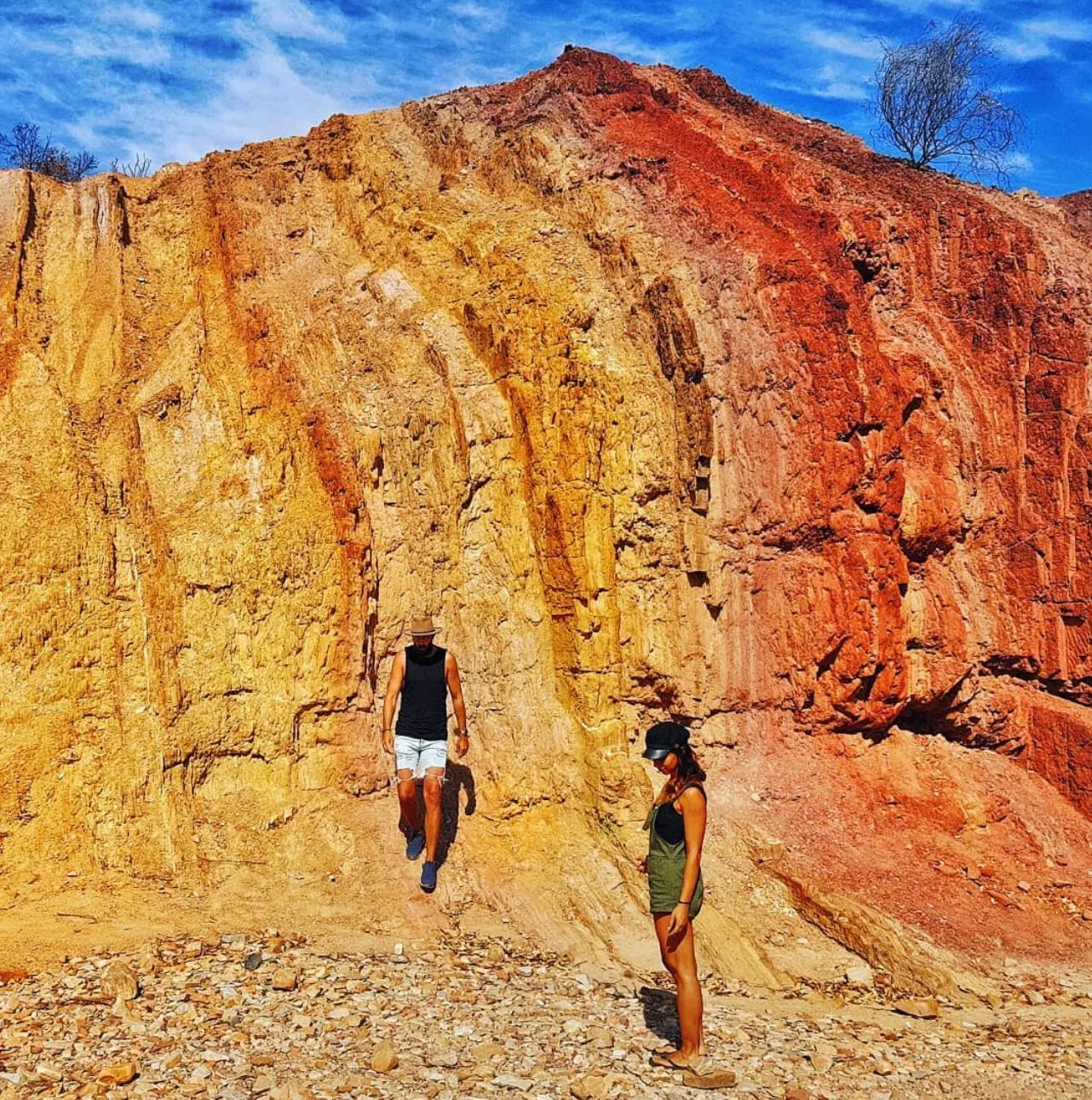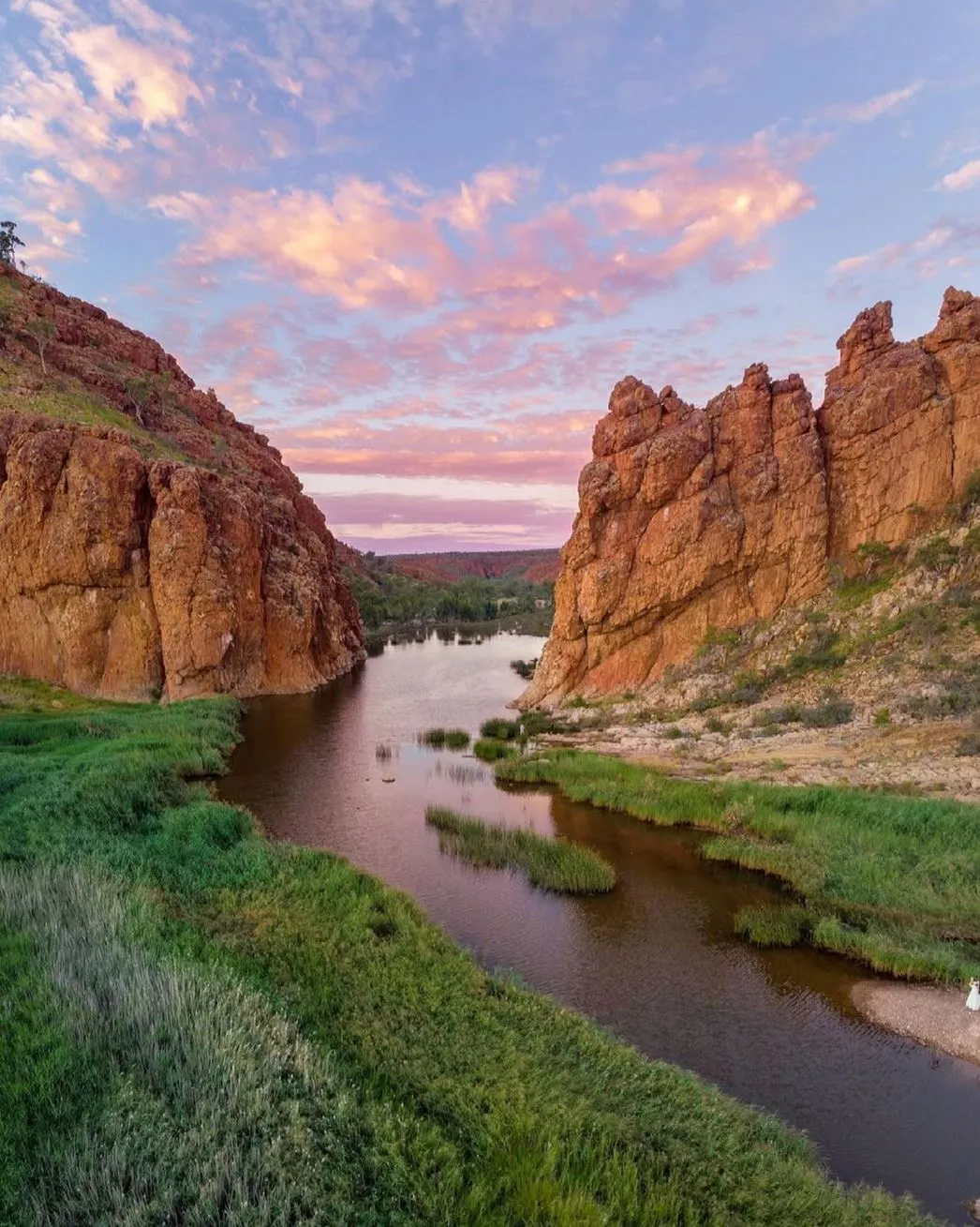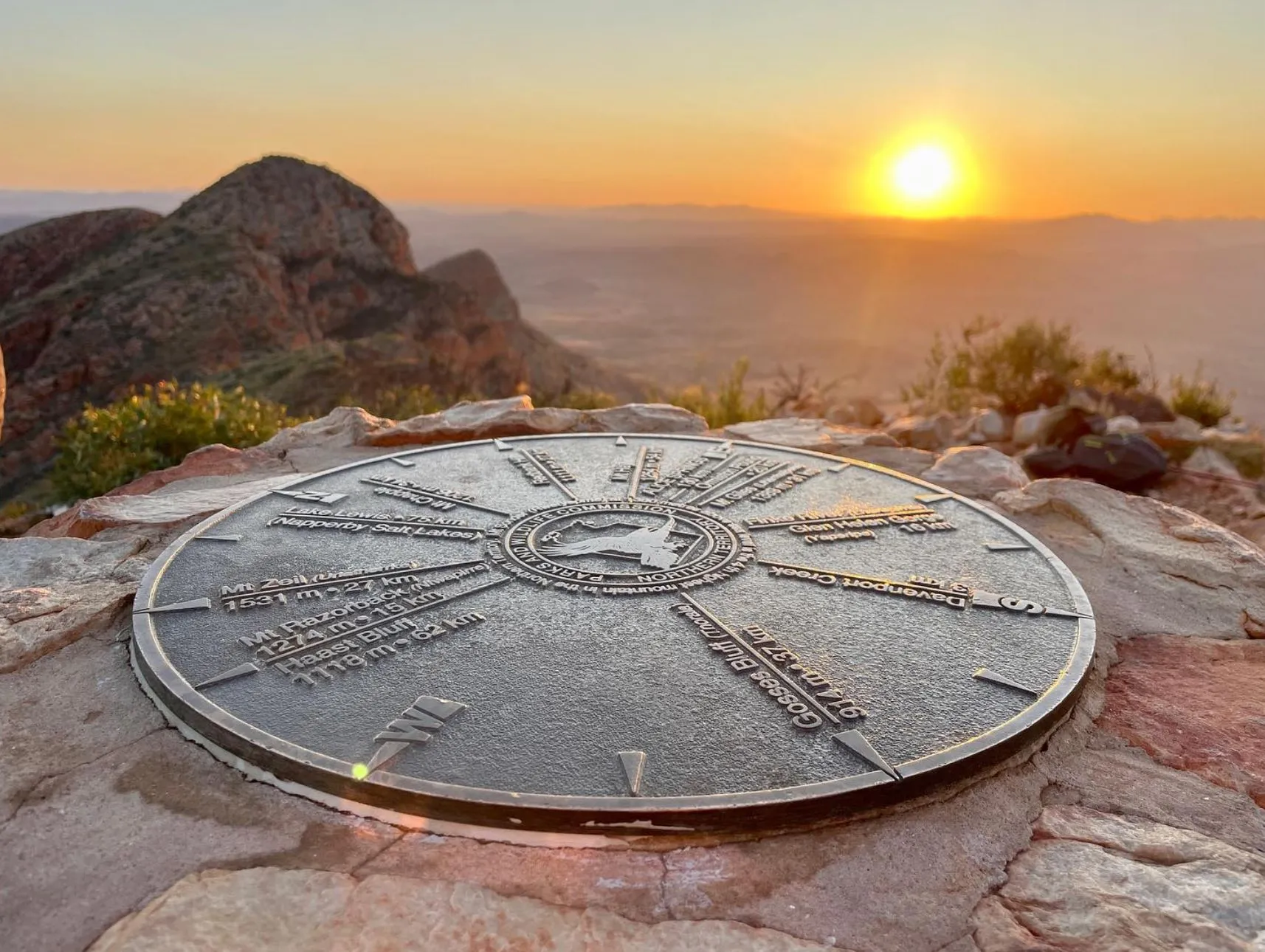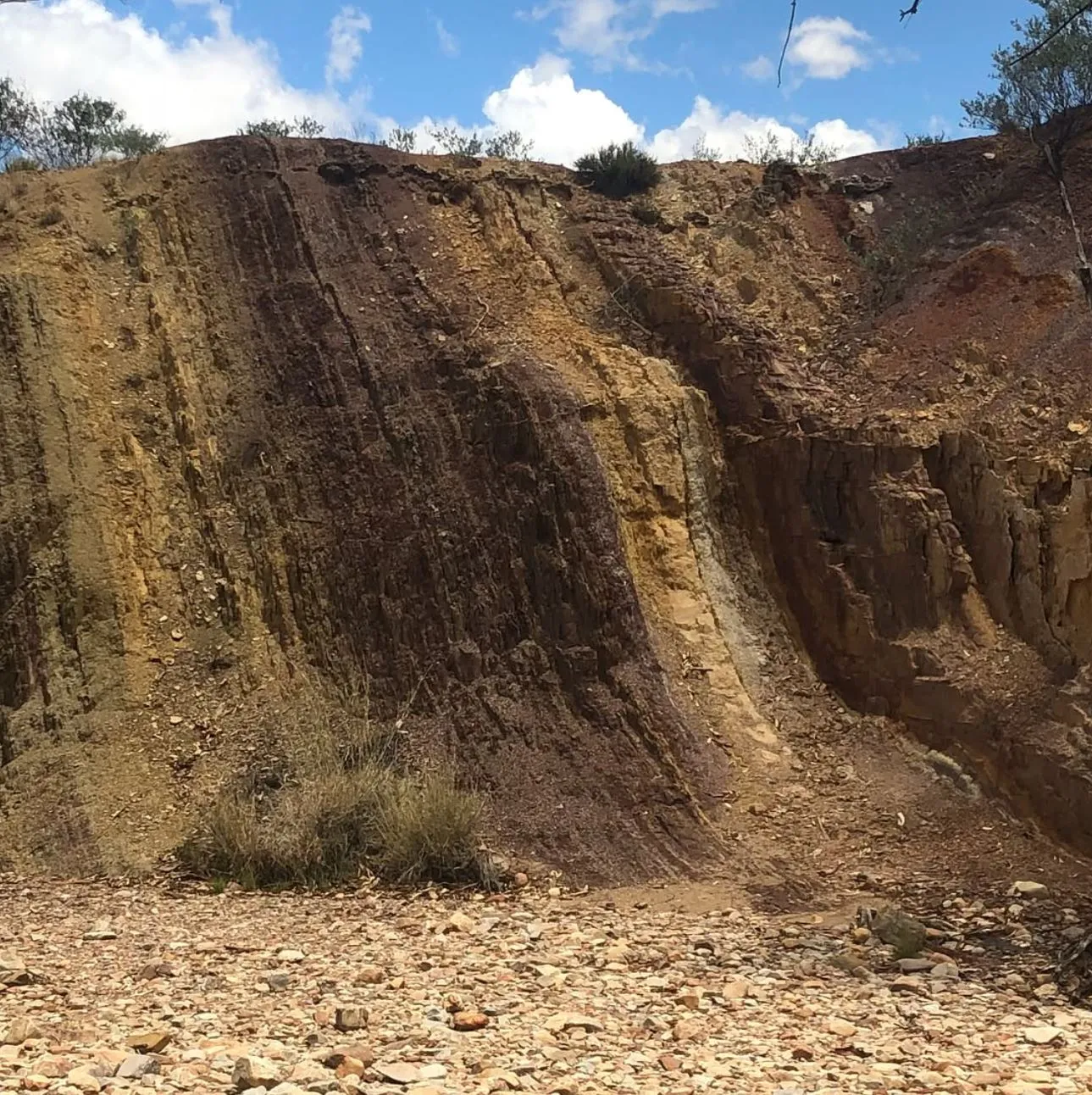The Ochre Pits in Australia are an amazing natural wonder, giving you a glimpse into the rich cultural and geological history of the area. Located in the West MacDonnell Ranges of the Northern Territory Australia, these stunning mineral-rich cliffs have been an important part of Aboriginal culture for thousands of years. If you’re heading to Central Australia, the Ochre Pits should be on your list!
A Natural and Cultural Landmark
The Ochre Pits are colourful cliffs made of naturally occurring ochre stone pits, a type of clay that Indigenous people have used for Aboriginal art and ceremonial and artistic purposes for generations. The pits display a range of earth colours including deep reds, bright yellows, oranges and purples.
For thousands of years local Aboriginal people, especially the Arrernte people, have mined these mineral’s rock formation ochre deposits to make wooden weapons, rock art and ceremonial decorations. Ochre-red Serpentine Gorge, cathedral-like Redbank Gorge and other nearby sites are also culturally and geologically significant. Weapons from the termites were also made from the ochre mixed with natural materials. Ochre is sacred and its extraction and use follow traditional practices passed down through generations.


How To Get to The Pits
The Ochre Pits are only 110 km west of Alice Springs along the Larapinta Drive. The site is easy to get to by car and a great stop along the Red Centre Way or a walking tour from Alice Springs Telegraph Station. The drive itself is stunning, passing through the beautiful landscapes of the West MacDonnell National Park (Tjoritja / West MacDonnell National Park). You’ll also pass Glen Helen Gorge, Ellery Creek Big Hole, Fringe Lily Creek and Serpentine Gorge with amazing scenic views.
The Ochre Pits are accessible via Section 10 of the Larapinta Trail, connecting Hugh Gorge to Ormiston Gorge.
Things to Do
- Marvel at the Rock Formations: The ochre cliffs are a stunning contrast to the desert and make for great photos of the colours.
- Learn About the Culture: Information boards at the site tell the story of the Aboriginal Ochre Pits to the Aboriginal people.
- Hiking and Exploring: While here, take short walks around the area to enjoy the natural setting, formations and bird life.
- Photography: The rocky terrain and earthy colours of the ochre layers are a photographer’s dream.
- Other Sites to Visit: Make time to visit Ormiston Gorge, Simpsons Gap, Redbank Gorge, Hugh Gorge, Ellery Creek South, Palm Valley, Jay Creek, Rocky Bar Gap, and Angkerle Atwatye, all in West McDonnell Range.

Best Time to Visit
The best time to visit the Ochre Pits is during the cooler months from April to September when it’s more comfortable to visit. Mornings and late afternoons are the best times for photos; the colours of the ochre cliffs will be more vivid. If you’re hiking the Larapinta Trail make sure you have enough time and bring water bottles and a day pack.
Important Travel Tips
- Respect the Site: As this is a sacred Aboriginal site, please don’t touch or remove any ochre from the pits.
- Pack Essentials: Bring lots of water, a map of walking tracks and comfortable walking shoes to navigate the rough terrain.
- Check Road Conditions: Although the site is easy to get to, always check the gravel road conditions before you go, especially during severe weather or pop-up showers.
- Facilities and Comfort: There are portable toilets, Toilet Map resources and some places nearby that have hot showers. Be aware of the cancellation conditions and booking conditions if you are planning a long stay.
- Guided Walking Tours: Consider joining a Larapinta Trail Trek Support team or using Larapinta Trail Transport if you are walking the Larapinta Trail.
A visit to the Ochre Pits is a real treat. It’s magic, natural beauty and deep cultural significance. Whether you’re a history buff, trail runner, nature lover or photography enthusiast, this is a must-see in Northern Territory Australia.

FAQ
Is there an entry fee to visit the Ochre Pits?
No, entry to the Ochre Pits is free. But a Parks Pass may be required to enter the West MacDonnell National Park.
Can I take ochre from the site?
No, removing ochre from the site is strictly prohibited as it’s a sacred Aboriginal site. Please respect the cultural traditions and leave the ochre alone.
What facilities are available at the Ochre Pits?
There are walking tracks, portable toilets and information boards about the cultural significance. But no food or water facilities, so bring water bottles and a day pack.
What should I wear when visiting the Ochre Pits?
Wear good walking shoes, a hat and sun protection as the terrain is rough. If hiking the Larapinta Trail, make sure you have the right gear for the unpeakable terrain.
What are some other attractions near the Ochre Pits?
Ormiston Gorge, Ellery Creek Big Hole, Serpentine Gorge, Redbank Gorge, Glen Helen Gorge, Simpsons Gap. Beautiful scenery and hiking and photography opportunities.
